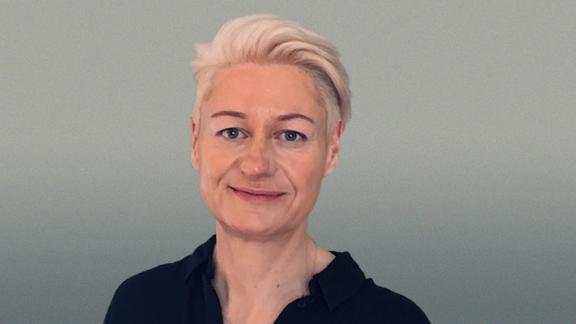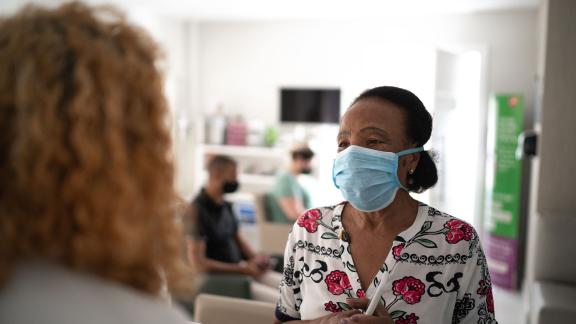Embracing community pharmacy can improve population health

Kat Dalby-Welsh writes on the importance of community pharmacy playing an active part in decision-making and becoming integral to clinical and professional leadership.
A key driver for establishing primary care networks (PCNs) is to empower and enable all parts of primary care to work together to improve their populations’ health and wellbeing. The vast skills of community pharmacy are an essential part of the mix.
Medicines’ safety and optimisation is widely recognised as an element of its unique skill set but increasingly community pharmacy is collaborating with partners in primary care to deliver integrated clinical services in integrated care systems (ICSs).
However, at a time of rapid change and exceptional challenge for the NHS and its partners, there is risk that the impact community pharmacy could deliver will be constrained by a number of barriers that are present in the current system, such as a lack of clarity at both ICS and local level about what pharmacy can do, and bureaucratic obstacles to getting new services up and running, with limited local flexibility.
Removing the barriers
With demand from patients growing and becoming more complex as a direct result of the pandemic, it is important that we empower pharmacy to seize the opportunity to improve our collective offer across the system.
They are a key part of a clinical patient pathway
The clinical needs of community pharmacists can provide many system benefits as we seek to offer better services based on our communities’ needs and to deal with higher demand and a backlog of care. They are the right people to go to for certain conditions. They are a key part of a clinical patient pathway – for example the Discharge Medicines Service which can reduce readmissions and occupied bed days. And they are a part of the clinical service delivery model, particularly in PCNs, including things like the delivery of hypertension case finding.
Within Yeovil, where I am a primary care network clinical director, all five practices are all using the GP-Community Pharmacist Consultation Service and are finding the collaborative working increasingly helpful, both in terms of supporting general practice workloads, and hastening patients access to the appropriate medication.
One example is a lady with a migraine who required a repeat prescription. Her surgery referred her to the community pharmacy, who were able to work with the surgery to understand the need and issue the medication. The lady was so pleased that she came back with a bunch of flowers.
Another is a 40-year-old lady who contacted her GP with symptoms of a urinary tract infection. She was referred to the community pharmacy team who instigated a phone consultation and were able to prescribe the required medication within a few hours.
How we’ve been working
The success we are having is due to ensuring that the receptionists received clear training and direction, with refresher training. We gain feedback and data on a monthly basis which allows us to understand where it is working well.
The discharge medicine scheme allows a copy of a patient’s notes to go the GP and the designated pharmacy. On arrival at the pharmacy, the notes can be checked to see when the next supply is due, and at that point any amendments can be made. This reducing wastage of medication and more importantly allows a quick turnaround of updated medications.
In Yeovil, during a three-month period more than 1,500 people were referred, with 70 per cent them having a successful intervention. This is an example of an excellent closed loop referral system, meaning that patients gain a quick and complete episode of care.
Empowering community pharmacy
How we best empower and enable community pharmacy was the topic of a recent discussion hosted by the NHS Confederation’s PCN and Primary Care Federation networks, National Pharmacy Association and Primary Care Pharmacy Association, which has led to a new report on ensuring that community pharmacies are effectively integrated in their ICSs.
Among the things community pharmacists need are the time and space to get involved in collaborative working, through the development of local services with their primary care colleagues, as well as the need for nationally specified services to be properly resourced.
I’ve seen in my area what can happen if we collaborate well, and it has been hugely positive for our local populations. Now we need to do more of it, and on a bigger scale
The report, and an accompanying short read encompassing key actions that PCNs and community pharmacists can take now, are pragmatic and realise that there is a role for all levels to play in making the most of what community pharmacy can offer, from national decision makers to ICS leaders, PCNs, GP federations and pharmacists themselves.
Fundamental to all of the barriers the discussion identified, and the potential solutions, is a need to enable community pharmacy to play an active part in decision-making across the ICS and become integral to its clinical and professional leadership.
I’ve seen in my area what can happen if we collaborate well, and it has been hugely positive for our local populations. Now we need to do more of it, and on a bigger scale.
Kat Dalby-Welsh is clinical director of Yeovil Primary Care Network and PCN Network clinical director board member.



